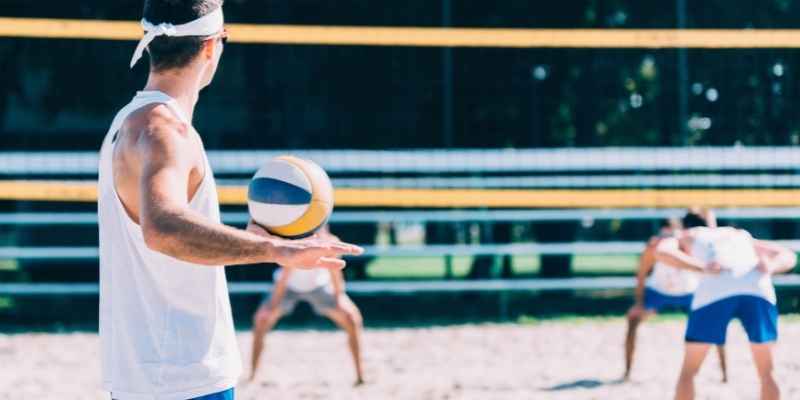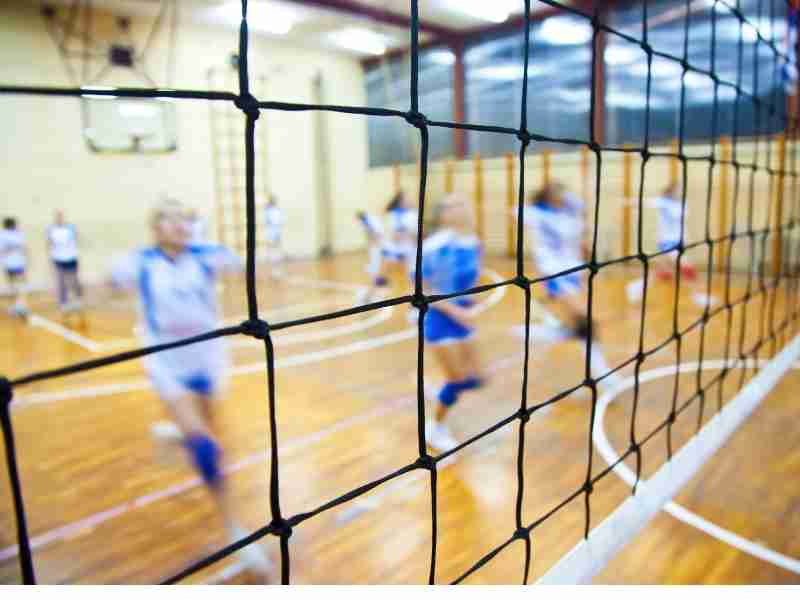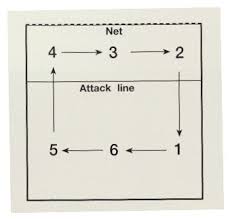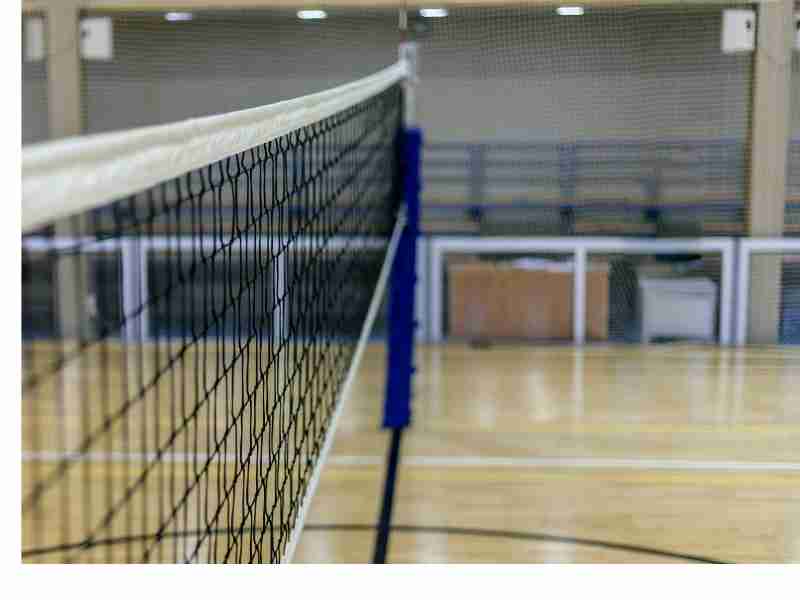
Volleyball players and fans often debate about many different aspects of the game. One topic that often arises is whether a libero can serve in volleyball. In this blog post, we’ll explore the history of the libero position and how it has evolved.
We’ll also look at the rules regarding serving and see if there is room for interpretation when allowing a libero to serve.
Can A Libero Serve In Volleyball?
In volleyball, the libero is a specialized player responsible for playing defense. Traditionally, the libero has been restricted to playing in the back row, but recent rule changes have allowed the libero to play anywhere on the court.
So, a libero is not allowed to serve according to international libero regulations. Yes, the libero can fill a single rotation position across the college, high school, middle school, and club levels in the United States.
Additionally, the libero cannot serve consecutively and can only switch serving positions with another player once per set.
The position of the libero is vital to a volleyball team’s success. The libero is responsible for providing defense and keeping the ball in play.
A libero needs to fulfill specific requirements to be qualified to serve. The libero must initially be dressed differently from the rest of the team. Second, another player had to have entered the game before the libero.
Volleyball Libero History
The libero is a position in volleyball that was created to help keep the ball in play. The libero is a back-row player who specializes in passing and defense. This position was created in 1998 by the International Volleyball Federation (FIVB). The libero is typically one of the minor players on the court and is required to wear a jersey that is a different color than the rest of the team so officials can quickly recognize them.
The libero was created to increase the number of rallies and improve the quality of play. In addition, it helps to keep players fresh by allowing them to rotate out when they need a break. The libero has become an integral part of modern volleyball and has helped make the sport more exciting.
Furthermore, the NCAA added the libero position in 2002, and most high schools in the United States followed suit over the next three years.
Initially, no level of competition allowed the libero to serve. Volleyball rules were changed around this time to allow for rally point scoring (rather than the previous “side out” scoring system, which only allowed the serving team to score). The NCAA modified the rule in 2004 to permit the libero to fill just one rotational position.
The lower levels quickly followed suit. All USAV, NCAA, and lower levels of competition have modified the original rules to allow liberos to serve.
Women’s volleyball drew tens of thousands of spectators as they focused more on defense, resulting in longer and more exciting rallies.
The NCAA changed its rules to allow libero to serve to keep the idea of using the libero to make matches more interesting alive.
Why Was It Decided to Allow Serving?
Initially, the libero position was strictly defensive, sustaining rallies through improved digging and passing. They were not to be involved in nearly any crime.
The decision to allow serving was made for several reasons. Although this may appear unusual, the goal was to increase the game’s competitiveness and excitement. When you have powerhouse hitting, and very few skilled passers, many points are decided by who gets a good hit through the blocks.
A serving provides an opportunity for players to learn new skills. It can be rewarding to know that allowing libero to serve has made a difference in all players’ careers, and it can be fulfilling to see the positive impact that your service has on the community. For all these reasons, serving as an integral part of volleyball society.
As a result, the libero can serve, set (under strict rules), and hit while standing.
The libero position has also enhanced volleyball by enabling tall, talented athletes to perform at their absolute best. Before the libero position was created, any short player was a liability for half of the rotation unless they were exceptionally good at jumping.
Substitutions are restricted in volleyball, which creates a liability for coaches. So there’s no telling how many excellent defensive players have gone unnoticed because there wasn’t a perfect role for them.
Serving as a Libero at Various Levels
The libero position is relatively revolutionary in volleyball and has quickly become an essential part of the game at all levels. At the youth level, liberos help develop fundamental skills and increase playing time for all players.
At the high school level, they provide leadership and stability for young teams, and at the collegiate and professional levels, they play an essential role in helping teams win matches. In short, the libero position is vital to the volleyball game at all levels.
In Middle School
The libero is vital in protecting the backcourt and keeping the ball alive. When I was in middle school, I had the opportunity to serve as my team’s libero. It was a demanding position, but it was also gratifying.
I loved feeling like I was essential to my team’s success, and I relished the challenge of trying to keep the ball alive at all costs. Although it was sometimes frustrating being restricted to the back row, I ultimately came to appreciate the vital role that the libero plays in volleyball.
Due to the complexity of the rules, liberos are uncommon on most middle school teams. Even with a trained coach, the use of liberos is at best limited.
In most cases, Liberos are not used as servers, primarily because they are still developing their strengths. This is also due to the height disparity between players, as it can be difficult for shorter players to get the ball over the net.
However, coaches usually let taller players with more power serve over their liberos. Ultimately, it is up to the coach to decide how best to utilize their liberos, but there is no doubt that they play a vital role in any volleyball team.
Anyone who’s ever played tennis knows nothing more frustrating than losing service after service. It seems like no matter how hard you try, the other player always manages to return your serve with interest.
So, as a volleyball player, improving your service is a great place to start if you’re looking to spend more time on the court. It won’t be easy, but the rewards will be well worth the effort in the long run.
You’ll discover that as you advance as a player, your enhanced performance will assist you in taking home more victories. You’ll be able to enjoy the game more knowing that you’re giving it your all, even if you don’t win every game.
In High School
It is common for liberos to serve at this level if their service is superior to the players they replace.
I was immediately drawn to the libero position when I started playing volleyball in high school. I loved the idea of staying on the court for the entire game and helping my team win by playing good defense. I quickly realized that being a libero was a lot of hard work. I had to learn how to read the other team’s offense and help my teammates make plays.
For my four years in high school, I became one of the best liberos in our conference. And although I don’t play volleyball anymore, I still look back fondly on my time as a libero.
This has less to do with how good the libero is at offensive serving, though I have seen some killer libero serves in my time, and more to do with how bad the other player is at serving.
At this level, libero decreases the possibility of a service error.
In College And University
Liberos can serve under NCAA rules only if they help their team.
In college volleyball, there is typically one libero per team. The libero is often someone who has good defensive skills.
If you consider playing libero in college, you should know a few things. First, you will need excellent communication skills. You will be responsible for calling out plays and ensuring your teammates are in the correct position. Second, you must be able to stay calm under pressure.
When the other team is attacking, you must make quick decisions and execute them flawlessly.
If you have these qualities, serving as a libero in college could be a great experience.
Since efficiency and tactics are everything at this level, the coaching staff will look into any strategy that could catch the opposition off guard.
In Professional Volleyball
In professional volleyball, the libero is a specialized player who acts as a defensive specialist. While most players rotate through all positions on the court, the libero is primarily responsible for playing in the back row and making digs. This position requires high athleticism, stamina, and excellent communication skills.
The libero is often one of the team’s most important players, and a good libero can make a big difference in a match.
The libero is not permitted to serve professionally because international leagues adhere to FIVB regulations.
However, a libero is allowed to serve under NCAA or USAV regulations, primarily used only in the United States. The Olympics follow the FIVB format, and the libero cannot serve.
Libero Substitutions
At any pause, any back-row player may replace the libero. Only the player the libero replaced is eligible to return after a substitution.
When other players line up in front of the down referee, liberos rush onto the court and take a position in the back row. Crossing the “Libero replacement zone” is necessary.
With whoever they are switching with, they slap hands. The libero replacement zone is located between the 10-foot and end lines.
The libero can serve in place of anyone, but once they choose a spot to serve, they can only do so for the remainder of the match.
Pay close attention from the stands because officials may struggle to keep track of this. Track the player the opposing team’s libero replaced before serving if they appear to serve frequently. Referees should give the opposing team a point and the ball if they serve again in someone else’s rotation position.
If the libero is switching to serve, they do not need to leave the court for a rally.
It expands coaches’ tactical options and presents difficulties in figuring out how to run an offense.
FAQs
Can a Libero Spike?
The spiking of libero in volleyball depends on the specific rules. In some versions of the game, a libero cannot spike. In other arrangements, a libero may spike the ball as long as they are not in the front row.
Only while standing can make the libero strike or attack the ball. According to the actual rule, the attack cannot occur above the net’s height.
Any airborne attack by a libero has usually ruled a violation by the referee. It is assumed that a jumping attack will be ruled “above the net.”
While liberos are not typically known for their attacking prowess, they can spike the ball when given the opportunity. Many liberos are excellent all-around players with strong defensive and offensive skills.
Can a Libero Be a Captain?
Being captain depends on the players’ capabilities, especially someone who is good at communication and leading skills.
Liberos can’t be team captains under FIVB rules.
The captain is in charge of communicating with officials on behalf of the team, especially at the start of the game. When they check the lineup, the libero is frequently regarded as the captain of the back row.
Can You Play With 2 Liberos?
Coaches may submit their starting lineup with zero, one, or two liberos. They are having two liberos early on helped limit substitutions (because liberos have unlimited substitutions).
Although most teams only have one libero, some coaches prefer to use two. While having two liberos on the court can increase defensive coverage, there are also some drawbacks. For instance, it might restrict the team’s offensive options and make it simpler for opponents to anticipate where the ball will end up.
It’s better to have one as a libero and the other as a defensive specialist if you have two strong defensive players. Because of this, 2 libero systems are rare. One libero will play most of the time, and the other will be a backup.
Why Do Liberos Wear A Different Jersey?
Following the libero through a game can be confusing for volleyball beginners at first. The libero must don a jersey that stands out from their teammates to help with this.
Liberos typically wear a different color jersey than their teammates so that the officials can quickly identify them. The libero is also restricted to playing within the back row, which helps to prevent illegal blocking calls.
While the libero does not have as many offensive responsibilities as other players on the court, this position is still vital to a team’s success. With their quick reflexes and sharp vision, liberos help keep the ball alive and give their team a chance to score.
So that everyone can easily recognize them, the libero will wear the opposite jersey to the rest of the team.
Bottom Line
So, can a libero serve in volleyball? A libero can serve in volleyball but is limited to specific serving rules. If you are playing with a libero on your team, make sure you know the serving rules to take advantage of this player’s skills.






